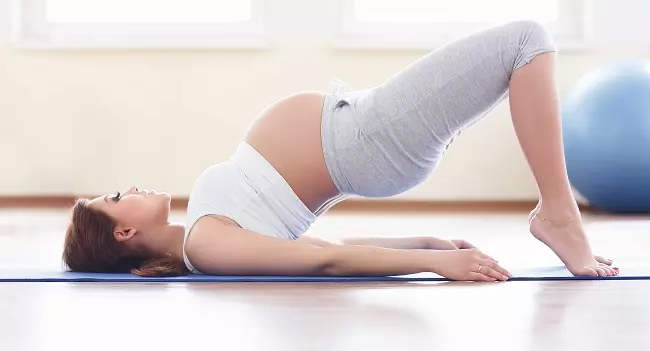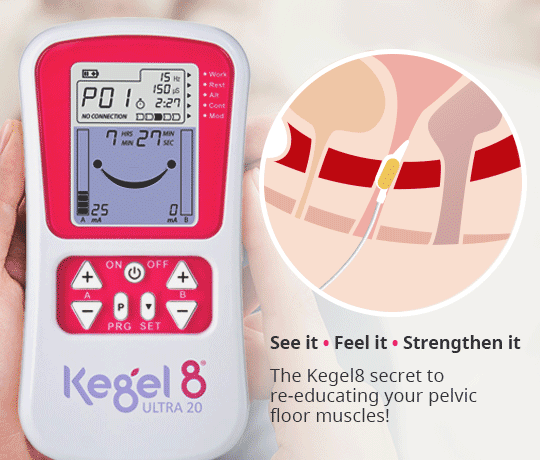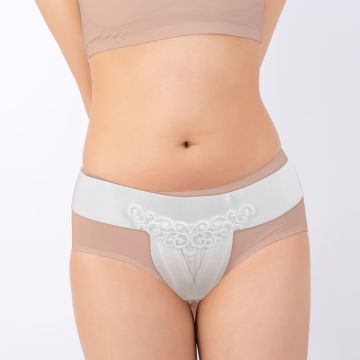
Firstly, there’s a congratulations in order! Well done on completing a major life milestone and coming out on the other side of pregnancy. To say that your body has been through hell is a huge understatement. It's been through hell, got the t-shirt, and sat on the throne. Unfortunately, your journey is not over yet. You’ve just rented out your body for a whole 9 months, and now’s the time to start the repairs and maintenance, because your tenant didn’t leave it in the best condition.
Tackling your post-baby body is often at the top of most women’s postnatal to-do lists. However, you must approach your new mum bod with caution; it may not exactly agree with the type of exercise that you choose.
Your muscles, ligaments, and bone structure were massively altered whilst you were pregnant, which makes you increasingly vulnerable to injury. It’s now far easier for your muscles to overstretch and strain. However, help is at hand, as here at Kegel8 we are offering you our top tips for starting postnatal exercise.
Kegel8's Top Tips on Starting Postnatal Exercise:
- Kegel! – Of course! Being able to normalise your bodily functions again is probably a top concern for you. To help tackle postnatal stress incontinence, practice your pelvic floor exercises daily to improve and maintain a strong pelvic floor.
- Protect and support – Investing in a new sports bra is essential for supporting your breasts when exercising. The assistance can also help to reduce the risk of stretch marks, whilst supporting upper body posture and back pain. However, you should be careful that your bra doesn’t fit too tightly, as this may cause ‘mastitis’, a condition that causes your breasts to become inflamed.
- Take it slow – Your body will really appreciate it if you take exercise slowly. Remember, it has endured a lot of stress in the past 9 months, if you push it, it may deteriorate. Try starting out with low impact exercises to reduce stress on your body.
- Fake it – For the many mums who view exercise as a chore (both before and after pregnancy), incorporate it into your daily routine to make it seem like less of a hassle. For example, doing your Kegels every time the adverts are on TV.
- Feed first – If you choose to breastfeed, ensure you do so before exercising for your own comfort. Or alternatively, if your baby doesn’t need feeding, you can pump your breastmilk for later use.
- Fuel yourself – Ensure that you don’t exercise on an empty stomach, you need feeding too! Plus, it’ll give you the energy to go for longer!
- Test your toes – Get your feet measured before you try and squeeze back into your old shoes; your feet tend to increase in size during pregnancy. A pair of well-fitting trainers also results in greater ankle stability, reducing the risk of long-term problems such as back and joint pain.
- Drink up – Ensure you drink plenty of fluid both before, and after exercising. If you’re not hydrated, then your body can’t perform at its best level.
- Snooze away – If you’re feeling tired or drained, have a rest. It’s important that you don’t strain your body as your body tends to take a long time to recover after childbirth.
- Red light – Stop immediately if you begin to feel any pain or change up your exercise if you begin to feel uncomfortable.
So now you know how to help your body exercise after childbirth, it’s time to actively engage with exercise. But where do you start? What’s best for your body? Here at Kegel8, we’ve compiled a list of the best exercises to do after childbirth, and which you should avoid.
What Are The Best Postpartum Exercises?
Kegels – Pelvic floor exercises are an essential stop on your body’s road to recovery. They will help your perineum and vagina heal more quickly. To tone your pelvic floor faster, try one of Kegel8’s electronic pelvic floor toners.
Walking – An easy exercise for you to do after childbirth is walking. Gentle walks are a great exercise for most new mums, and you don’t even have to leave baby behind with mum or dad.
You should wait until your postnatal check-up if you wish to do any other exercise apart from walking and Kegels.
What Postpartum Exercises Should You Avoid?
Cardio – It’s best to avoid high-impact exercises, such as running, until your pelvic floor and joints have fully recovered from pregnancy and childbirth. You’ve got to be patient, as in some cases this can take several months. If the exercises you choose include running or jumping, the pressure that is put onto your pelvic floor muscles can result in a pelvic floor disorder occurring; such as pelvic organ prolapse or incontinence.
Women’s health physiotherapist, Emma Brockwell, notes that ground reaction force in running is thought to be between 2.5 to 3 times your body weight. Your body has to be able to manage this load. This requires time and the right exercise to become run-ready post-baby.
Abdominal muscle work – Working out your stomach muscles when you have a weak pelvic floor can make stress incontinence even worse. This includes exercises like sit-ups, planks, and straight leg raises. Emma emphasises that your tummy muscles consist of 4 layers, and after childbirth it is important to strengthen your deepest layer, transversus abdominus, first. This forms part of your core. Exercising your stomach muscles can cause the two vertical muscles down the front to stretch apart, which can lead to a bulge forming.
Emma Brockwell urges that if you leak urine, suffer from low back pain, or have a heavy-set feeling in your vagina, it could be a sign that your pelvic floor has been damaged. You should stop high-impact exercises for now and speak to your GP and request a referral to a women’s healthy physio who can help you rehabilitate safely and return to the exercise you want to do.

Hopefully these tips and tricks will help you transcend from pelvic floor hell to Kegel heaven. For more information on your pelvic floor, check out Kegel8’s help and advice centre.
To learn more about Emma Brockwell and her work, visit her site here.
Sources
[1] ACPWH. 2013. Fit for the future: essential exercises and advice after childbirth. Association of Chartered Physiotherapists in Women's Health. ACPWH booklet.
[2] Dumoulin C, Hay-Smith J. 2010. Pelvic floor muscle training versus no treatment, or inactive control treatments, for urinary incontinence in women. Cochrane Database of Systematic Reviews (5) CD005654. [Accessed 10/08/2018].
[3] Junginger B, Baessler K, Sapsford R, et al. 2010. Effect of abdominal and pelvic floor tasks on muscle activity, abdominal pressure and bladder neck. International Urogynecology Journal 21:1:69-77. [Accessed 10/08/2018].
[4] Morkved, S., Bo, K. (2000). Effect of postpartum pelvic floor muscle training in prevention and treatment of urinary incontinence: a one-year follow-up. International Journal of Obstetrics and Gynaecology. 107(8), pp. 1022-8.
[5] Morkved, S., Bo, K. (2014). Effect of pelvic floor muscle training during pregnancy and after childbirth on the prevention and treatment of urinary incontinence: a systematic review. British Journal of Sports Medicine. 48(4), pp. 299-310.
[6] da Mota P, Pascoal A, Carita A et al. 2015. Prevalence and risk factors of diastasis recti abdominis from late pregnancy to 6 months postpartum, and relationship with lumbo-pelvic pain. Manual therapy 20(1) 200-205.
[7] NHS. (2016) Keeping Fit and Healthy with a Baby [online] NHS [viewed 01/08/2018]. https://www.nhs.uk/conditions/pregnancy-and-baby/keeping-fit-and-healthy/.
[8] NICE. 2010. Weight management before, during and after pregnancy. National Institute for Health and Care Excellence, Public health guideline 27. [Accessed 10/08/2018].
[9] Pelaez, M. et al. (2013). Pelvic Floor Muscle Training included in a pregnancy exercise programme is effective in the primary prevention of urinary incontinence: A randomized controlled trial. Neurology and Urodynamics. 33(1), pp. 67-71.
[10] The Guild of Pregnancy and Postnatal Exercise Instructors (2018) Exercise Advice for New Mums [online] The Guild of Pregnancy and Postnatal Exercise Instructors 2018 [viewed 01/08/2018]. Available from http://postnatalexercise.co.uk/exercise-advice-for-new-mums/.






